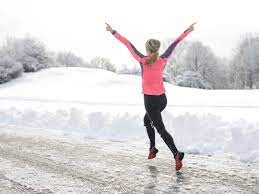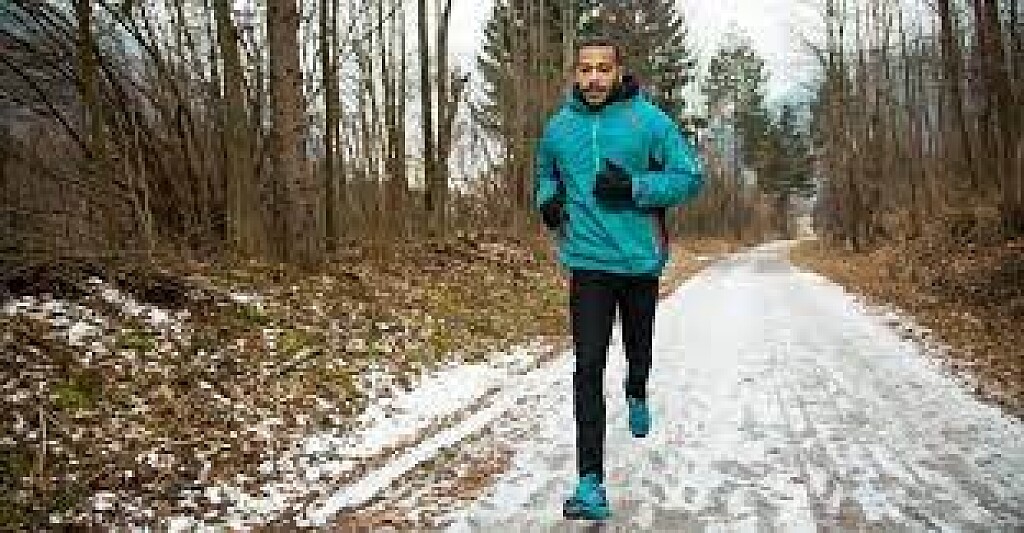Running News Daily
Running News Daily is edited by Bob Anderson. Send your news items to bob@mybestruns.com Advertising opportunities available. Train the Kenyan Way at KATA Kenya and Portugal owned and operated by Bob Anderson. Be sure to catch our movie A Long Run the movie KATA Running Camps and KATA Potato Farms - 31 now open in Kenya! https://kata.ke/
Index to Daily Posts · Sign Up For Updates · Run The World Feed
Benefits and Protection Strategies for winter time running
Winter is coming. And if you’re tempted to blow off a workout in anticipation of snow, ice, cold, or rain, you’re not alone. Research from the Journal of Sport and Health Science suggests that many people use winter weather as an excuse to forego exercise.
Outdoor exercise, including running outside in the winter, can be good for you in a number of ways. It provides opportunities to boost your vitamin D exposure. It can also help you get some of the physical activity that your doctor (and other experts) are always encouraging everyone to get on a regular basis.
You’ll want to approach running in winter with safety in mind. Here are some tips to keep you safe and warm.

Tips for running in cold weather
Don’t just tie the laces on your running shoes, jam a hat on your head and head outside. Take some time to prepare in advance of your winter runs.
Check the weather forecast. Find out how cold it really is, as well as whether any rain or snow are likely, which could affect the safety status of your running path.

Dress appropriately. Think layers. With several layers of clothing, you can gradually shed one (or more) of them when you warm up and start to sweat. Then you can put them back on when you need them so you don’t get chilled.
Start slowly. If you haven’t been running much up until now, resist the temptation to launch yourself into a sprint right away. Spend some time building up your endurance gradually.
Wear something reflective. If the weather is gray and cloudy, it may be harder for drivers to see you. Add some reflective tape to your running jacket or clothing.
Stay hydrated. You might not remember to drink fluids as often as you would in the hot summer months, but your body still needs water. Drink some beforehand and take water with you to drink along the way.
Warm up and cool down. Give your body some time to adjust on both ends of your run.
Tell someone where you’re going. Just in case something unexpected happens, make sure a friend or family member knows where you’re planning to run and when you’ll be back.
Pay attention to the weather. Monitor the wind and temperature in case you need to cut a workout short.
Stop if something goes wrong. If your chest starts to hurt, you feel lightheaded, or you worry that you might have pulled a muscle in your leg, don’t keep pushing forward. Head inside and call a doctor if you’re concerned.
What to wear when running in cold temperatures
There’s an old expression often attributed to the people who live in Scandinavia that’s applicable here: “There’s no such thing as bad weather, only bad clothing.” So, if you want to run outside when the air is frosty, it’s important to have good clothing.
Remember: You’ll warm up and start to sweat, so keep that in mind when you get dressed. That’s when those layers come in handy.
Here are suggestions for your basic outdoor run wardrobe. You may need to vary some of it, depending on how cold it is where you live:
Gloves. In cold weather, your feet and hands are especially vulnerable to the cold — and at risk for frostbite. Don’t forget the gloves or mittens, whichever you prefer. You could even wear a pair of thin gloves made from a material that wicks away sweat, then put a heavier pair of mittens or gloves on top.
Socks. Put the cotton socks back in the drawer and choose socks that will wick away perspiration and keep your feet dry and warm. Wool socks are a good choice.
Running hat. A lightweight hat or beanie that covers your ears should be on your must-have list. Again, it’s never a bad idea to choose a fabric that wicks away moisture.
Base layer. Wool or a technical fabric should be your go-to choices for long-sleeve shirts that function as a base layer to keep your body warm. As with your socks, avoid cotton since it can get and stay wet next to your skin.
Pullover. Don this item of clothing after you put on your base layer. Some people like wool, others like fleece.
Jacket. Here’s another layer for you. Some runners prefer a wind-resistant layer on top. Depending on the weather, a waterproof or water-resistant jacket might be a good option for you. Pockets are a matter of personal preference, but remember, they can be a good place to temporarily stash your gloves if you need to do so.
Running tights or pants. Some runners love a fleece-lined legging to run in. In very cold climates, some runners layer a pair of tights under a pair of pants.
Running shoes. Make sure you wear running shoes that fit your feet correctly. If you wear thicker socks in the winter, make sure your shoes accommodate them. Look at the bottom of the shoes, too. You want to make sure they have enough traction to grip the road or trail, so you don’t slip if it’s slippery from rain, snow, or ice.
Sunscreen. If your face is exposed to the elements, it’s vulnerable, too. Apply a broad-spectrum sunscreen with an SPF of at least 30.
Optional: sunglasses or goggles. Some runners prefer to wear eye protection to block the glare from the sun, or even from ice or snow.
What are the benefits of running in cold weather?
While there may be some risks associated with running in cold weather, there are certainly some benefits, too.
Increases your aerobic activity
A major benefit of running in cold weather is that you’re getting some aerobic exercise.
Adults need an average of 150 minutesTrusted Source of moderately intense aerobic activity or 75 minutes of more vigorous exercise each week, according to the Centers for Disease Control and Prevention (CDC). A couple of brisk runs outside could easily help you achieve those goals.
Revs up your metabolism
Additionally, the cool temps themselves might actually rev up your metabolism and help change your body composition.
Burns calories
A 2014 studyTrusted Source found that men who were exposed to cooler temps overnight for a month experienced a significant increase in brown fat, which burns calories rather than storing them as white fat does.
If you’re looking to shed a few pounds — or keep the weight off that you’ve already lost — this could be a benefit that motivates you to keep on heading out the door.
by Healthline
Login to leave a comment




